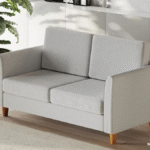If someone asked you to imagine 4 centimeters, you might pause for a moment. It’s such a small unit that most people can’t picture it instantly. But once you associate it with familiar items like a golf tee or a ping pong ball, it becomes much easier to visualize. This article explores ten real objects that measure around 4 centimeters, providing clear examples, relatable details, and practical ways to estimate that length in daily life.
4 Centimeters Means

Four centimeters equal forty millimeters or roughly one and a half inches. To put that into perspective, it’s just under the width of two U.S. quarters placed side by side. Understanding small units like this matters more than people think. Whether you’re sewing, doing home repairs, or building a model airplane, being able to recognize what 4 centimeters looks like helps you work more accurately without constantly reaching for a ruler.
| Unit | Equivalent |
| 4 cm | 40 mm |
| 4 cm | 1.57 inches |
| 4 cm | 0.053 feet |
Small measurements appear everywhere product packaging, gadget components, and art projects all rely on precise lengths. Knowing what 4 centimeters looks like gives you a reliable mental scale for these everyday objects.
Standard Golf Tee

A standard golf tee usually measures between four and four-and-a-half centimeters. Golfers use them to raise the ball slightly off the ground, giving each drive from the tee box better accuracy and distance. Most tees are made from wood or plastic, and though some are longer for drivers, many short-range or practice tees stay close to the four-centimeter mark. The next time you see one in the grass, picture it as a perfect reference for a small object roughly four centimeters long.
Golfers often carry a mix of tees, and that variety helps explain why small differences in length matter. A four-centimeter tee is short enough for control yet tall enough to lift the golf ball to an ideal height. Thinking in those terms gives a vivid sense of what four centimeters look like in action.
Width of a Credit Card

A credit or debit card might seem much larger, but if you focus on its shorter side the width it’s close to four centimeters. According to ISO 7810 standards, a payment card measures about 85.6 mm by 53.98 mm. While the width technically exceeds four centimeters, it still serves as an excellent visual comparison. When you fold a card into three equal parts across its width, two of those parts together represent about 3.6 centimeters, nearly matching the target length.
The next time you reach into your wallet, look at that familiar rectangle. That narrow edge is a useful visual benchmark. It’s one of the easiest and most accessible ways to picture the span of four centimeters without any measuring tool at all.
Standard Wine Cork

Wine corks offer another great reference. A typical natural or synthetic cork measures between 4.4 and 4.6 centimeters long, while smaller versions used in specialty bottles or half-sized wines often fall closer to 4 centimeters. The cork’s length matters because it affects how well a bottle seals and how long the wine can age.
When you open a bottle and examine the cork, you’re holding something that’s nearly the exact size of four centimeters. This simple everyday item combines functionality with a precise, recognizable length, making it an easy mental ruler.
13 Common Things That Weigh About 20 Kilograms (kg)
Height of a Chess Pawn

Look at a standard chessboard and notice the smallest piece: the pawn. In tournament-grade Staunton sets, a pawn typically stands between 3.8 and 4.2 centimeters tall. That’s close enough to serve as another clear example. Chess sets are carefully standardized under FIDE regulations, which makes the pawn’s height remarkably consistent from one board to another.
Because most people have seen or handled a pawn, it provides a universal image of this measurement. Visualizing a pawn standing on a square gives you a mental model of what four centimeters really looks like short, solid, and balanced.
Adult Human Thumb (Knuckle to Tip)

If you want a measuring tool you can always carry, use your thumb. The top section from the knuckle to the tip measures about four centimeters for many adults. While hand sizes differ slightly, this natural marker remains surprisingly accurate.
When you estimate small distances, glance at your thumb. That single segment offers a personal scale reference. It connects measurement to the body’s natural proportions and helps develop quick, intuitive accuracy for small lengths.
Diameter of a Ping Pong Ball

This is one of the most precise real-world examples of four centimeters. The official diameter of a table tennis ball is exactly 40 millimeters, according to the International Table Tennis Federation (ITTF). Before the year 2000, balls were slightly smaller only 38 millimeters but the regulation changed to slow the game and make rallies easier to follow.
That perfect 40 mm diameter makes a ping pong ball a flawless standard for visualizing four centimeters. Hold one in your hand, and you’re literally holding the definition of that measurement. It’s lightweight, spherical, and consistent worldwide a true physical embodiment of four centimeters.
Length of a Jumbo Paper Clip

In most offices, you’ll find jumbo paper clips that measure around four centimeters in length. While standard clips can reach up to five centimeters, many popular designs fall right at the 38–42 mm range. They’re easy to find, inexpensive, and make surprisingly good measurement references.
Think about it: when you hold a clip between your fingers, you’re looking at roughly four centimeters of curved metal. It’s small enough to fit in your palm yet long enough to give a clear visual sense of scale. The next time you grab one to organize papers, remember that it’s your built-in four-centimeter guide.
Wingspan of a Dragonfly

Not all dragonflies are large. Some smaller species, like the Blue Dasher, have wingspans that hover around four centimeters. Their delicate wings demonstrate how compact natural design can be while still powerful enough for agile flight. Other miniature dragonfly species in tropical regions also fall within that same range.
These creatures show how nature builds precision into its design. When a Blue Dasher hovers above a pond, its wings stretch about four centimeters from tip to tip a living reminder of how small but capable a four-centimeter span can be.
Standard USB Flash Drive

Technology offers another perfect example. Many USB flash drives, especially the mini or micro designs, measure around four centimeters in length. Manufacturers often design them compactly so they don’t stick out far from computer ports. Even the protective caps of larger drives typically measure close to this length.
That small metallic rectangle represents a piece of modern convenience wrapped in just about four centimeters of engineering. When you plug it into a laptop, look at the part that remains outside the port you’ll see roughly the same size we’ve been describing throughout this article.
Length of a Guitar Pick

Musicians handle four centimeters every time they play. A standard triangular guitar pick, known as a plectrum, usually measures between 3.5 and 4 centimeters from tip to base. Its small size is deliberate; it allows players to control articulation, tone, and rhythm effortlessly.
The next time you see someone strumming a guitar, watch their fingers. That little plastic triangle they’re holding is about four centimeters long, yet it shapes every note of the performance. It’s a tiny but essential piece of design that balances comfort and precision.
Why Knowing 4 Centimeters Matters

Understanding the scale of four centimeters brings real world benefits. It sharpens your ability to estimate distances and makes small tasks more efficient. In crafting, for example, being able to picture this length helps you cut materials accurately without constant measuring. In do-it-yourself projects, knowing what four centimeters looks like lets you space nails or screws evenly.
Teachers often use everyday objects of that size to help children grasp early measurement concepts. The more familiar you are with a number like four centimeters, the more intuitively you can use it in daily problem solving. It’s a small unit, but it carries surprising power in building spatial awareness.
Practical Estimation Skills

Estimating without tools becomes easy once you link numbers to objects. Four centimeters can be visualized by comparing it with your thumb’s top joint, the width of a card, or a golf tee. You can even practice by folding paper: an A4 sheet is 21 centimeters wide, so folding it into five even parts gives you sections just over four centimeters each.
Repetition trains your brain. Over time, you begin recognizing that certain household objects, from keychain fobs to bottle caps, all hover around that same small distance. Developing this kind of spatial literacy strengthens your precision in art, design, and everyday life.
Fun Facts and Real-World Insights

The diameter of a ping pong ball exactly 40 millimeters is one of the most standardized global dimensions. Before 2000, the smaller 38 millimeter version dominated professional play until the ITTF revised the rule. Interestingly, the smallest known dragonfly species, the Scarlet Dwarf, measures about two centimeters long, meaning two of them placed end to end would equal four centimeters exactly.
These examples show that tiny measurements often hide in plain sight. From the science of aerodynamics in sports equipment to the body proportions of insects, four centimeters plays an understated but consistent role across different fields.
online Omni Calculator
Omni Calculator is an all-in-one online tool that offers thousands of free, easy-to-use calculators across nearly every field imaginable. Whether you’re solving math equations, managing finances, converting units, or checking your health metrics, Omni Calculator makes complex problems simple and fast. You can explore it here: omnicalculator.com
FAQs
How accurate are these comparisons?
Each example represents an approximate measurement. Manufactured objects follow standards, but biological specimens naturally vary. Still, these items fall close enough to four centimeters to give a reliable mental image.
Can I use my phone as a reference for four centimeters?
Some smartphones have widths or camera modules near that size, but it’s not universal. It’s better to use standard objects like a ping pong ball or a golf tee for accuracy.
Why is the ping pong ball the best example?
Because its size is officially set at forty millimeters by the International Table Tennis Federation, making it one of the few objects that precisely match four centimeters.
Do all chess pawns measure the same height?
Not exactly. Tournament sets follow consistent sizing, but travel or decorative sets can vary. Still, the pawn’s height typically stays within a few millimeters of four centimeters, making it a dependable comparison.
Conclusion
You’ve now explored ten everyday objects that measure about four centimeters long from a standard golf tee to the diameter of a ping pong ball. Each example connects a simple number to something tangible. Understanding these references gives you sharper visual awareness and makes small scale measurement second nature.
Four centimeters may seem insignificant at first glance, yet it quietly shapes much of what we use, build, and design. The next time you hold a paper clip, strum a guitar, or pour a glass of wine, take a closer look. You’re interacting with one of the most common small measurements in the world four centimeters, brought vividly to life through objects you already know.

Jhon AJS, the author of Dimension Orbit, is an experienced blogger fascinated by the mysteries of existence. He explores every type of dimension from scientific to spiritual with clarity and creativity. Jhon’s engaging writing style invites readers to think deeper, question reality, and discover new perspectives on the universe.






